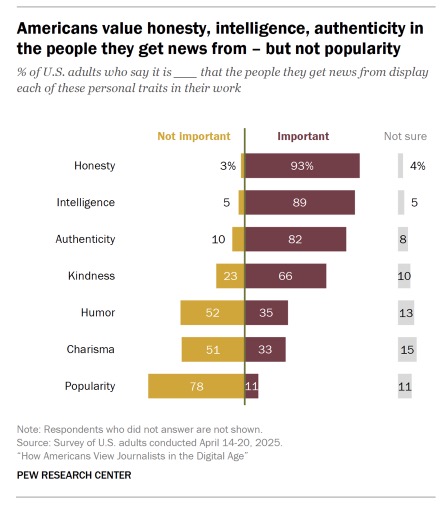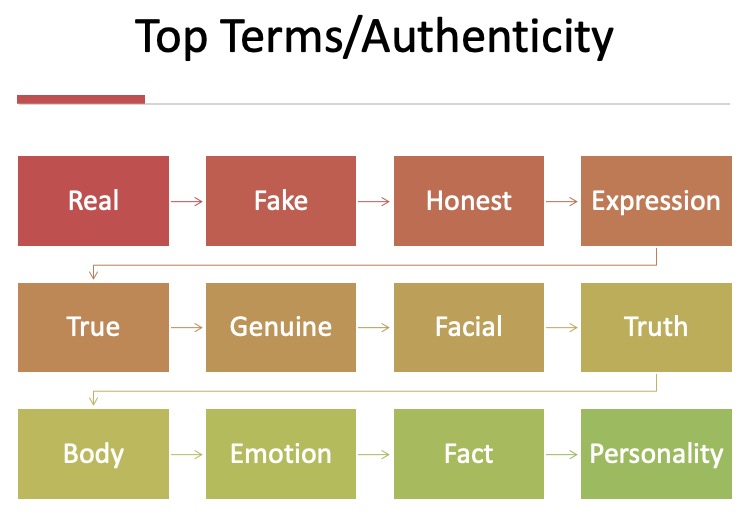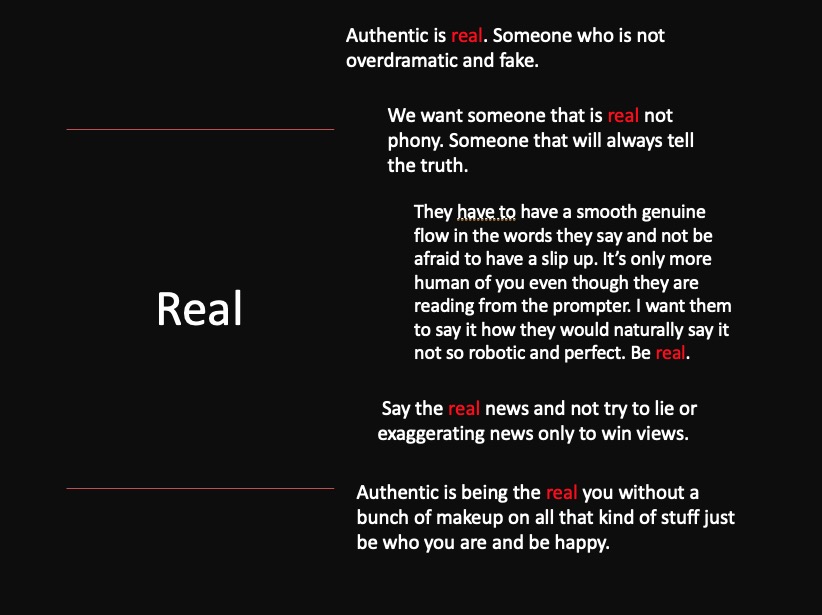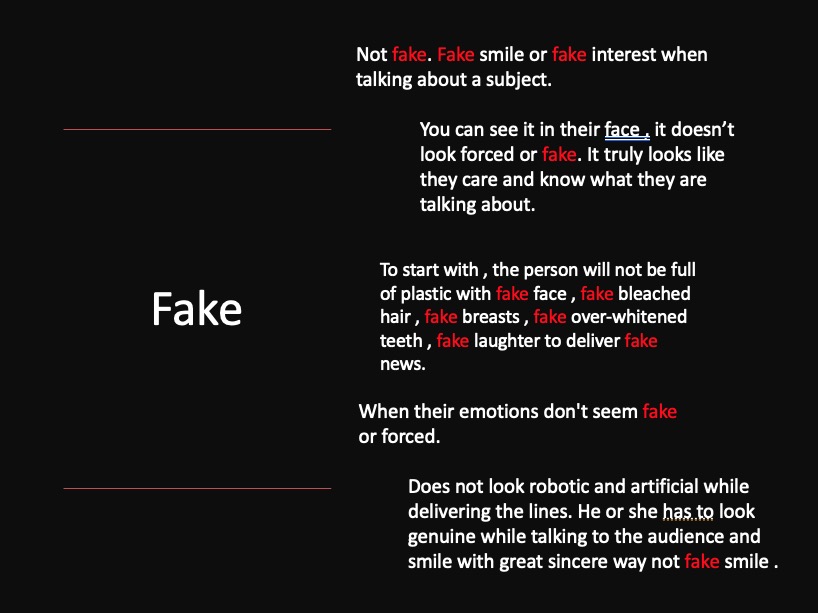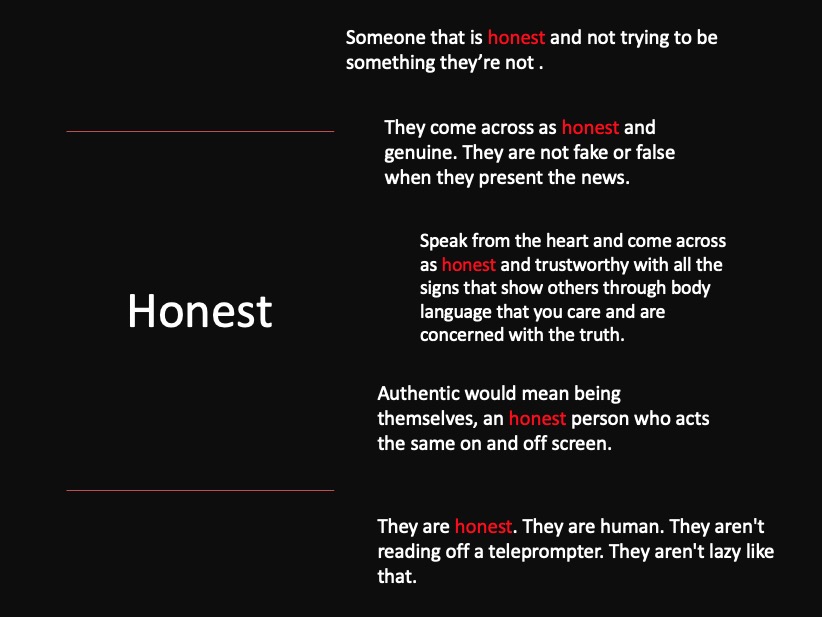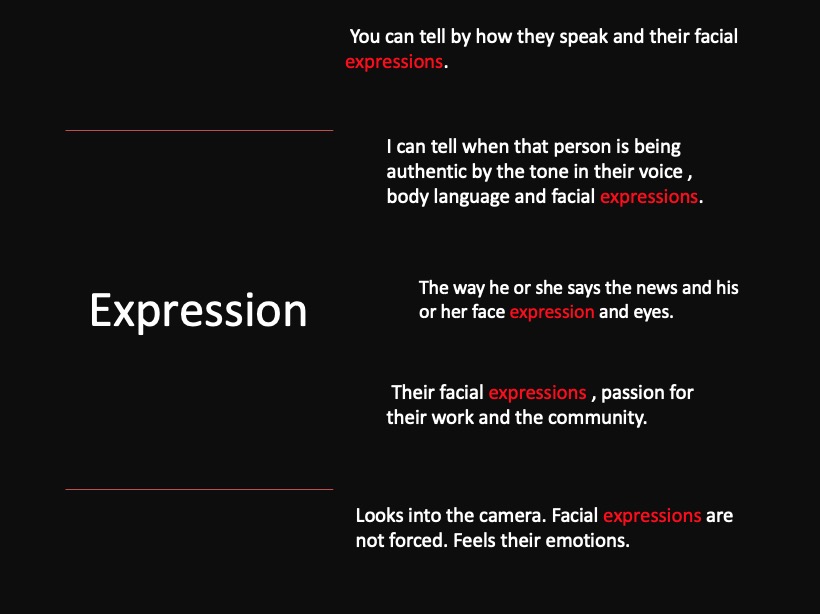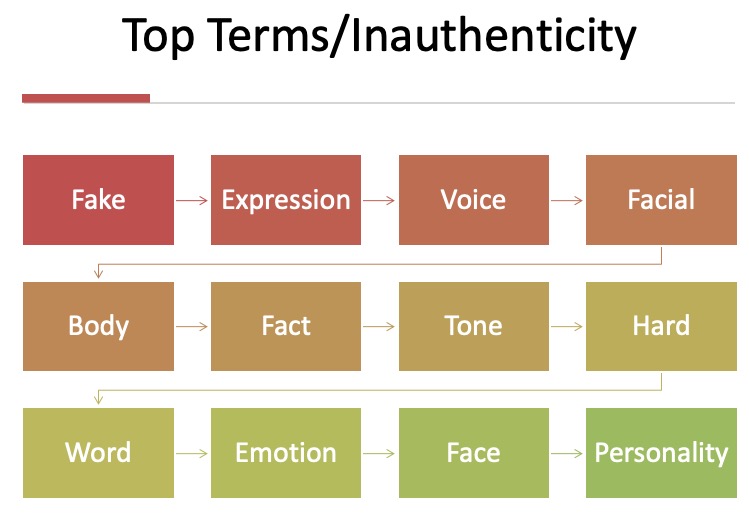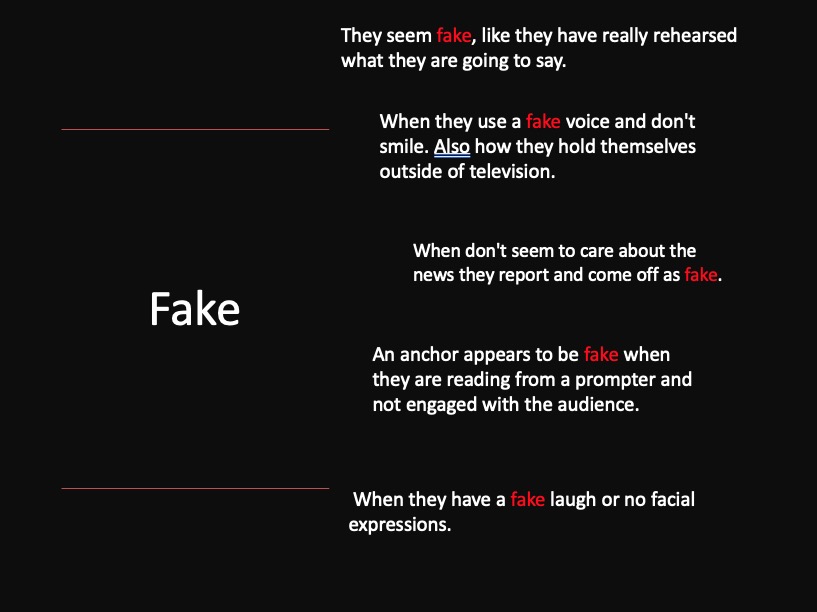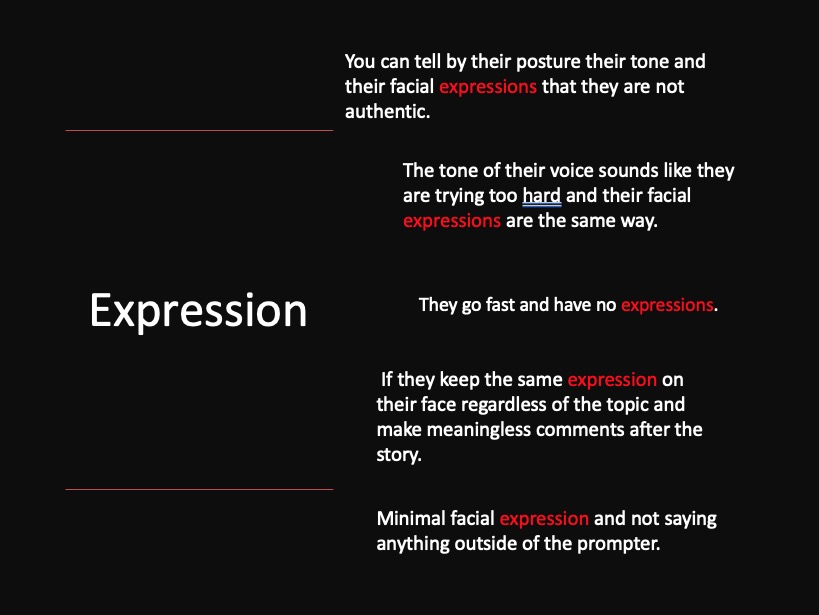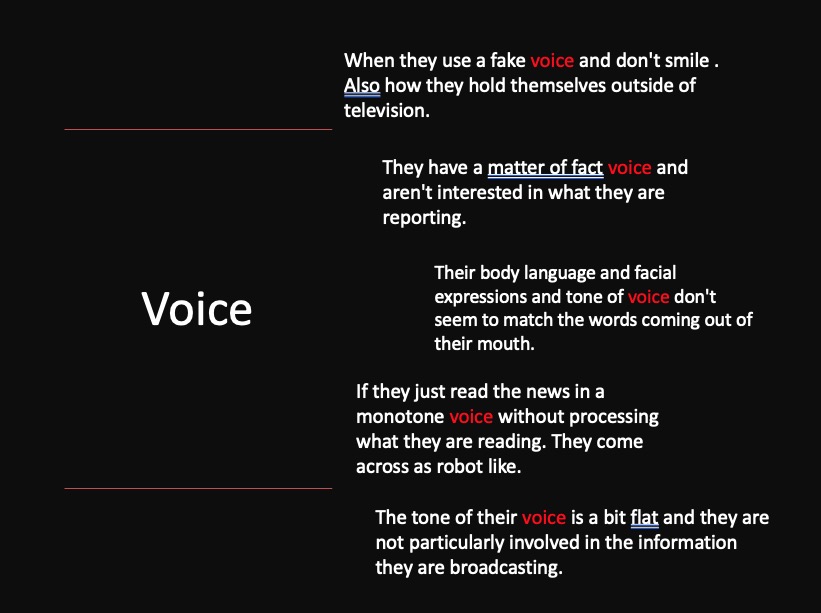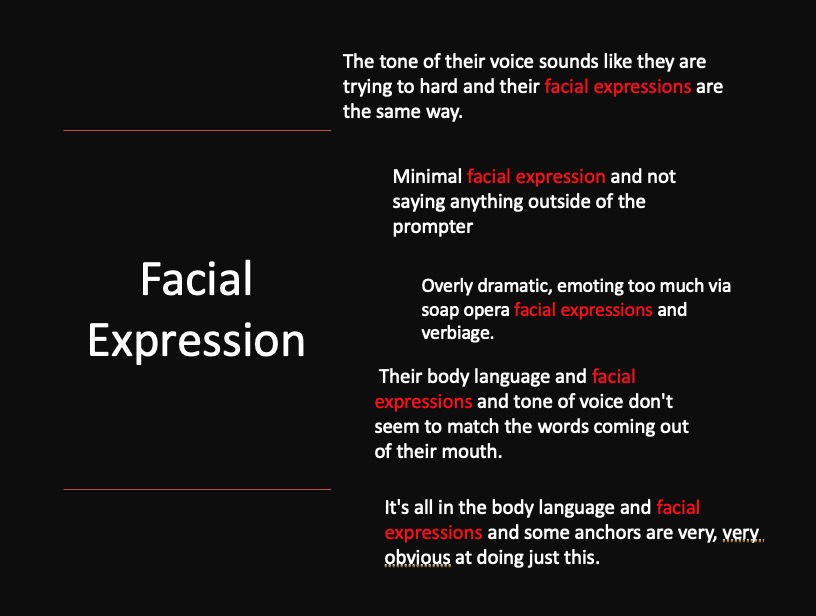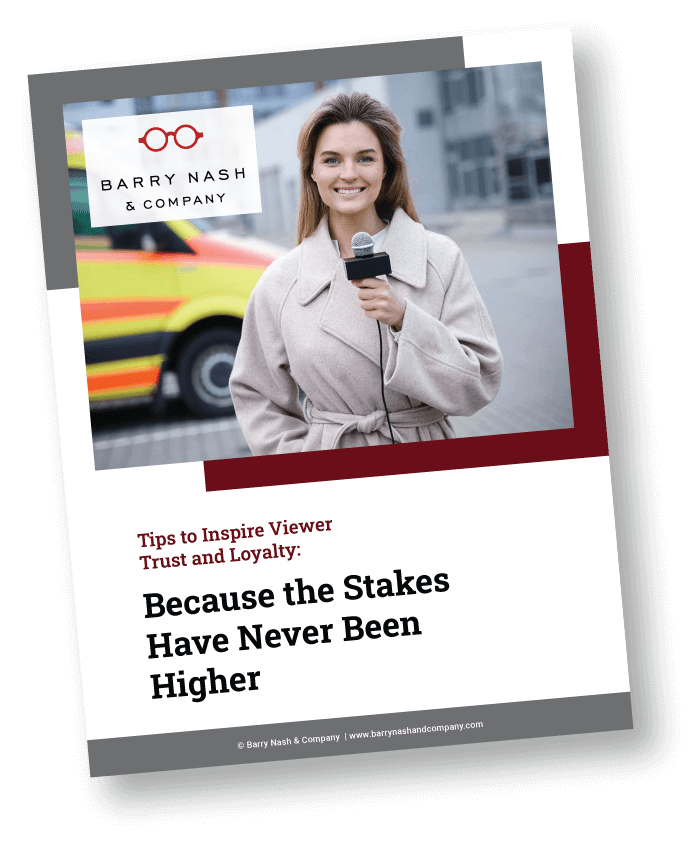Need your anchors and reporters to work more authentically on camera? When we asked viewers how they could tell when talent were being authentic, we learned a lot that can help you help them with that.
In a study recently published by the Pew Research Center, authenticity was one of the qualities Americans said they value most in journalists. But when Pew asked a focus group of 45 people what they meant by authenticity, a number of them said they “weren’t exactly sure.”
In late 2020, we asked over 800 news viewers how they could tell when talent were being authentic or inauthentic.
When we put it to them that way, viewers had no trouble at all telling us what they meant.
"How can you tell when an anchor is being authentic?"
One of the things it’s surprisingly hard for newsrooms to understand is that authenticity in delivery is not about perfection. It is about making connection. And viewers are telling us that it’s actually the imperfections that clue them to authenticity in talent. Should you be deliberately imperfect? Of course not. But if you think that simply executing flawlessly gets you there, you are missing the point.
Many viewers describe authenticity in terms of what it is not. And what it is not appears to be exaggerated effort in any form — appearance, voice, facial expression or attitude. It’s about sincere effort, something that’s virtually impossible without proper preparation. This is telling us that authenticity is seeded as much or more by what talent do before the newscast as it is by what they do on the newscast.
"How can you tell when an anchor is NOT being authentic?"
Preparation is the mother of Authenticity.
All of this is to say that maybe there’s no mystery to what viewers mean by authenticity at all. It’s simply a matter of what’s observable about you — what they can see, what they can hear, what they can feel — and whether it’s telling them that you really know and care or are just pretending to know and care.
And really knowing and really caring is hard work, especially when time and resources are in short supply. Because there are no shortcuts. You’re either prepared or you’re not. You either know what you’re talking about — and what you need viewers to get from it — or you don’t.
If you’re a manager, this means that authenticity begins with the way you manage the way your teams prepare. Because the quality of what you get on the air will be the direct result of the quality of the work your people do off the air. There are no shortcuts. Again, there are not shortcuts to authenticity.
You can't perform the kind of authenticity viewers value. You can't fake it. You have to prepare for it.

